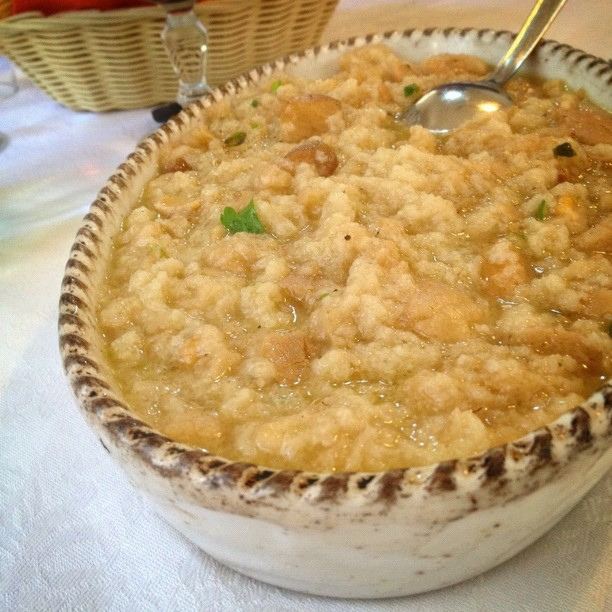Peasant foods are dishes specific to a particular culture, made from accessible and inexpensive ingredients, and usually prepared and spiced to make them more palatable. They often form a significant part of the diets of people who live in poverty, or have a lower income compared to the average for their society or country.
Peasant foods have been described as being the diet of peasants, that is, tenant or poorer farmers and their farm workers, and by extension, of other cash-poor people. They may use ingredients, such as offal and less-tender cuts of meat, which are not as marketable as a cash crop. Characteristic recipes often consist of hearty one-dish meals, in which chunks of meat and various vegetables are eaten in a savory broth, with bread or other staple food. Sausages are also amenable to varied readily available ingredients, and they themselves tend to contain offal and grains.
Peasant foods often involve skilled preparation by knowledgeable cooks using inventiveness and skills passed down from earlier generations. Such dishes are often prized as ethnic foods by other cultures and by descendants of the native culture who still desire these traditional dishes even when their incomes rise to the point where they can purchase any food they like.
Meat-and-grain sausages or mushes
Ground meat or meat scraps mixed with grain in approximately equal proportions, then often formed into a loaf, sliced, and fried.
BalkenbrijGoetta, a pork or pork-and-beef and pinhead oats sausageGroaty puddingHaggisLivermushLorne sausageScrapple, pig scraps, cornmeal and other flours and spices fried together in a mushSlaturGround meat or meat scraps extended with crackers or bread and vegetables, then formed into balls, patties, or loaves and baked.
KoftaMeatloafSalisbury steakSwiss steakTestaroli Agliata – a garlic sauce in Italian cuisine that has been a peasant food, and also used by upper-class peopleSoups and stews
Acquacotta, an Italian soup that dates to ancient history. Primary ingredients are water, stale bread, onion, tomato and olive oil, along with various vegetables and leftover foods that may have been available.Cholent, a traditional Jewish Sabbath stewChupe, refers to a variety of stews from South America generally made with chicken, red meat, lamb or beef tripe and other offalFeijoada, a Brazilian dish originally made by slaves from leftover ingredients from their master's houseGazpacho, typically a tomato-based vegetable soup, traditionally served cold, originating in the southern Spanish region of Andalusia.Minestrone, the meal in one pot of ancient Italy that is still a basic part of Italian cuisineMulligan stew, a stew often made by itinerant workersMujaddara, an Arabian dish of lentils, rice, grains, and onionsPea soup or "pease pudding", a common thick soup, from when dried peas were a very common food in Europe, still widely eatenPot-au-feu, the French stew of oxtail, marrow, and vegetables, sometimes sausagePottage, a staple stew made from boiling vegetables, grains and whatever was available, since Neolithic times in the British islesRatatouille, the stewed vegetable dishBaked beans, the simple stewed bean dishBarbacoa, a form of slow cooking, often of an animal head, a predecessor to barbecueBulgur wheat, with vegetables or meatBroken rice, which is often cheaper than whole grains and cooks more quicklyGreens, such as dandelion and okraHead cheese, made from boiling down the cleaned out head of an animal to make broth, still madeHominy, a form of corn specially prepared to be more nutritiousHorsebread, a low cost European bread, that was a recourse of the poorLampredotto, Florentine dish or sandwich made from a cow's fourth stomachPolenta, a porridge made with the corn left to Italian farmers so that land holders could sell all the wheat crops, still a popular foodPumpernickel, a traditional dark rye bread of Germany, made with a long, slow (16–24 hours) steam baking process, and a sour cultureRatatouille, the stewed vegetable dishRed beans and rice, the Louisiana Creole dish made with red beans, vegetables, spices, and leftover pork bones slowly cooked together, and served over rice, common on Mondays when working women were hand washing clothesSalami, a long lasting sausage, used to supplement a meat-deficient dietSoul food, some aspects come from foods that could be taken on a transatlantic passageSuccotash, a blend of corn and beansTaco, foods placed on native tortilla in the Americas
